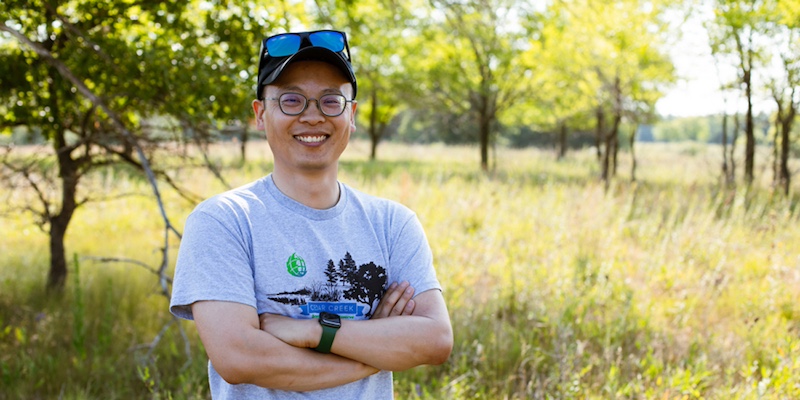Long before becoming an ecologist, Maowei Liang recalls being deeply impacted by the tangible ways his village in Inner Mongolia experienced global change. Wedged within a mosaic of pasture and agricultural land on the steppes of Inner Mongolia’s windy plateaus, his village was frequently in the path of severe dust storms.
“It was similar, like here, to the Dust Bowl. One day I remember [biking] home from school, and we got hit by this dust storm. When I got home, I washed my face and my hands. The water was super, super dark. I think that's the first time I got a sense of ecology and how environmental changes affect people’s lives.”
But it wasn’t until he witnessed the mountains near his village being blasted and excavated for industry use that he decided to take steps toward a life-long sustainable career.
"They literally cut the mountain. It made this very long scar, and also very deep. Landscape architecture was my preferred career because I believed it had the ability to heal that scar.”
After studying landscape architecture as an undergrad, Maowei took his graduate studies in a slightly different direction and studied ecology. For him, ecology perfectly aligned with his aspirations, as traditional landscape architecture in China always draws inspiration from nature. Eventually, Maowei would take the expertise he gained halfway across the globe to Cedar Creek Ecosystem Science Reserve, where his current role as research scientist allows him to explore the complex interactions of global change and biodiversity loss and how they impact ecosystems over time.
